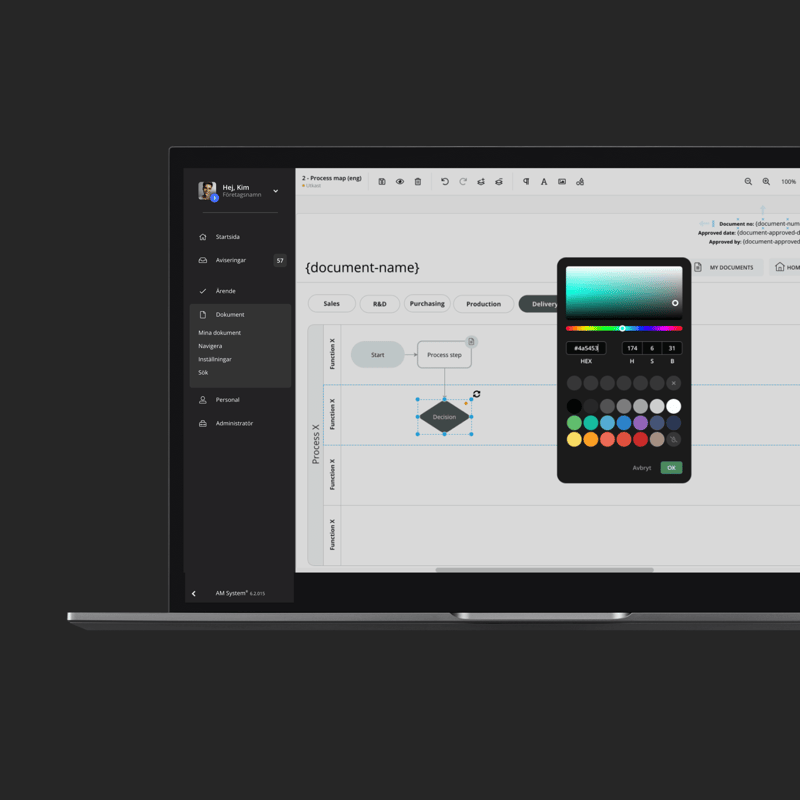Article
What’s the Difference Between a Quality Management System and an Intranet?
-
 Editorial team
Editorial team
-
- Quality Management System
- 2 min reading

Many organizations use both a quality management system and an intranet, but it’s not always clear how they differ – or when one tool is more suitable than the other. While both systems help structure information and communication, they serve different purposes and functions. Below, we outline the key differences and similarities.
What is a Quality Management System (QMS)?
A quality management system is a structured way to lead, monitor, and improve operations. It ensures that the organization works according to defined procedures, complies with standards and regulations, and continuously improves its processes. A QMS can be managed both manually and digitally, but more and more organizations are turning to digital platforms to streamline and simplify their quality work.
A quality management system you to:
-
Standardize and document processes
-
Manage policies and controlled documents
-
Ensure traceability and follow-up of deviations
-
Improve workflows through automation and integrations
In short: a QMS provides the framework for managing, improving, and assuring the quality of work processes throughout the organization.
What is an intranet?
An intranet is an internal platform where employees can share information, communicate, and collaborate. It serves as a digital hub for staff and may include news, discussion forums, and resources that link to policies and processes managed within the QMS.
An intranet helps to:
- Share internal information and company news
- Support communication and collaboration across teams
- Provide shared workspaces and resources
- Enable informal, day-to-day communication
While an intranet is communication-driven, a quality management system is compliance- and improvement-driven.
Quality management system vs. intranet - key differences
Although both systems manage information and documentation, they have different roles:
|
Function |
Quality Management System (QMS) |
Intranet |
|
Purpose |
Governance, quality assurance, and compliance |
Internal communication |
|
Users |
All employees, management, auditors |
All employees |
|
Document management |
Structured, version-controlled, traceable, compliant |
Open, informal sharing |
|
Interaction |
Guided processes and follow-up |
Free communication and flow of information |
|
Traceability |
Yes, version history and approvals |
No, limited or none |
Are there any similarities?
Despite their differences, there is some overlap between the two systems:
- Both are used for internal information sharing – but in different ways.
- Both can include documents – but a QMS ensures traceability, compliance, and correct versioning.
- Both help create structure within the organization – but with different primary goals.
Do you need both a QMS and an intranet?
In many organizations, the systems complement each other. An intranet can be a helpful channel for referencing or linking to information in the QMS, but it does not replace the need for a structured, traceable, and compliant system for managing quality-critical processes.
A QMS is designed to support effective workflows, meet regulatory and customer requirements, and drive continuous improvement. The intranet, on the other hand, supports informal communication and knowledge sharing in everyday operations.
However, if you’re choosing between the two, it’s worth considering whether a digital QMS could cover your needs. In practice, even informal internal information can be included – as long as it’s clearly separated from controlled content. For example, company news or HR information can be made available via a separate section or link within the system, without affecting its structure, traceability, or compliance.
Get a demo
Ready to make work easier - and more enjoyable?
Want to see for yourself how AM System can make a difference for you? Book a demo and discover how easy it is to create structure, efficiency, and seamless workflows in your daily operations.
